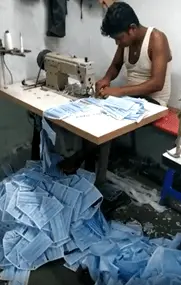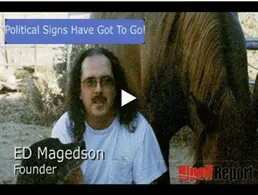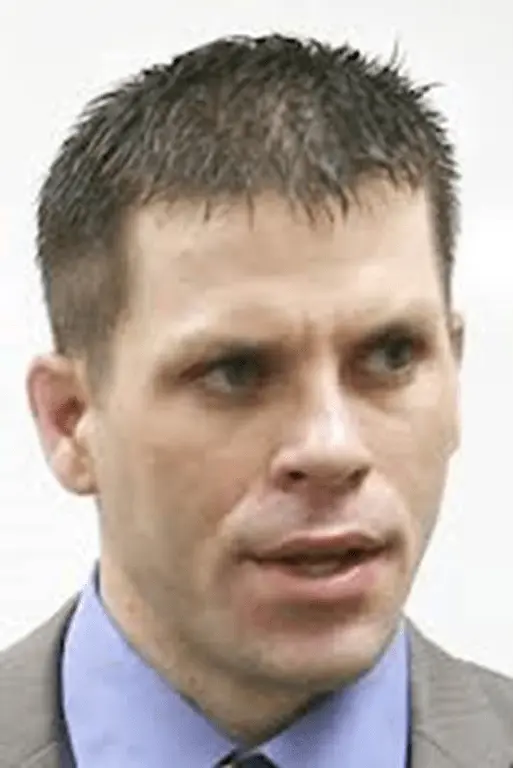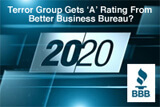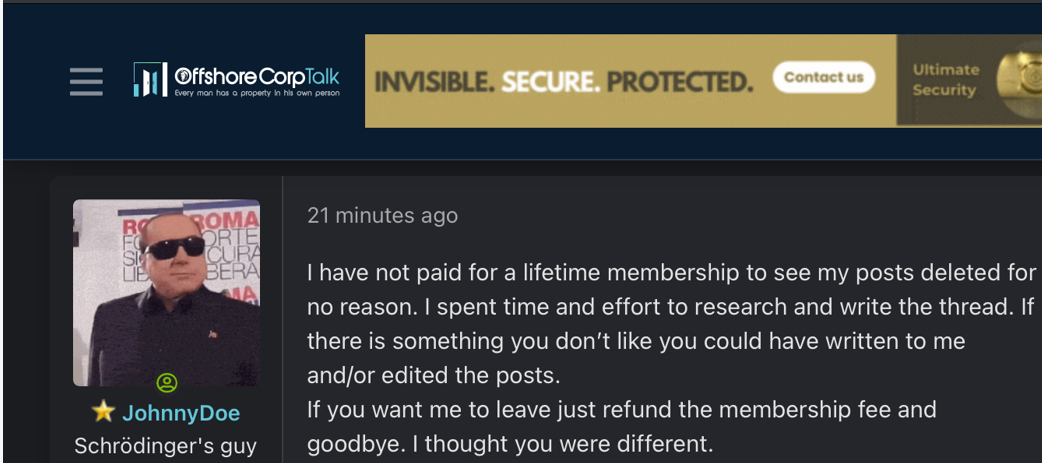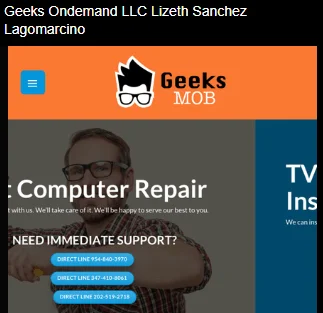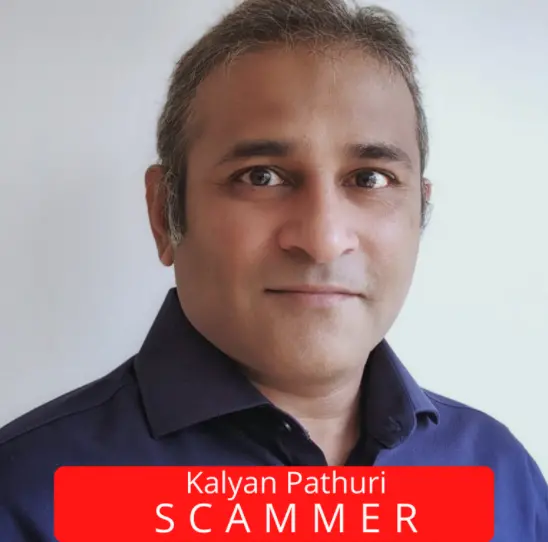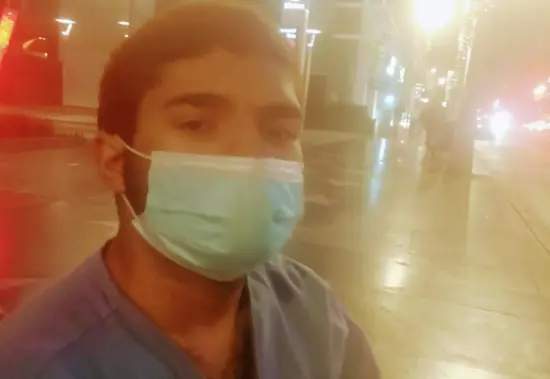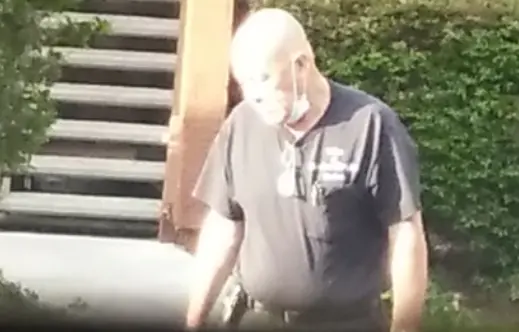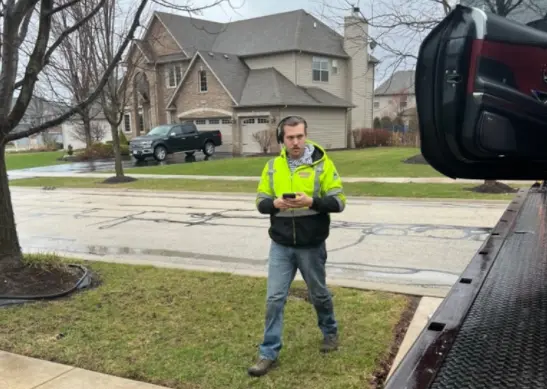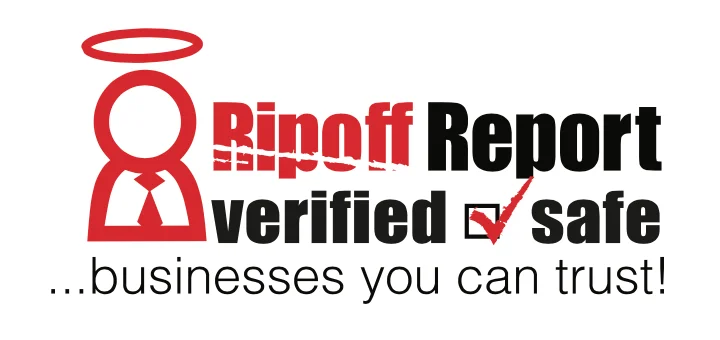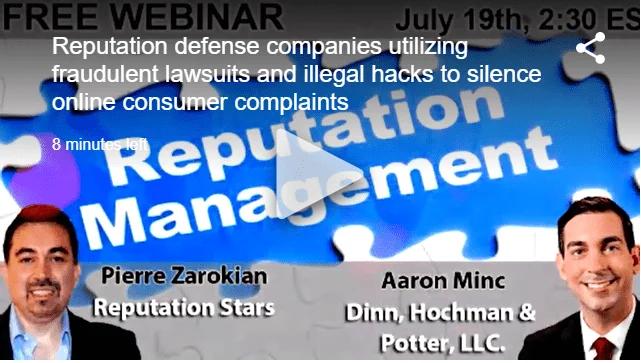Complaint Review: Americorp Enterprises INC. - Toronto Ontario
- Americorp Enterprises INC. 3100 Steeles Ave W, L4K 3R1 Toronto, Ontario Canada
- Phone: 905) 907-4017
- Web: http://www.americorpenterprises.com...
- Category: Construction
Americorp Enterprises INC. Nick Rescinti and Camillo Rescinit Do not Invest with Americorp. They will not give you your money back! Toronto Ontario
*Author of original report: 3100 Steeles Avenue West, Concord. Americorp Enterprises. Nick Resciniti Camillo Resciniti
*Author of original report: 2004 Ontario Court Judgment
listed on other sites?
Those sites steal
Ripoff Report's
content.
We can get those
removed for you!
Find out more here.
Ripoff Report
willing to make a
commitment to
customer satisfaction
Click here now..
Alexopoulos v. Resciniti, 2004 4791 (ON SC)
The above Judgement against Nick and Camillo Rescinti was filed in Ontario in 2004. The money that they tried to ripoff fromt Mr. Alexopoulos was lent in 1998. A total of 6 years had passed without paying Mr. Alexopoulos a dime. If you read the judgment, it clearly states that the Judgement found the brothers to be LIARS!
Click to see read through the full judgement: tinyurl.com/nickrescinitiscam
I know there are more people out there who have been ripped off by Nick and Camillo Rescinti - please share your stories. If you have judgements against them or any of their business, you can post them online herer because they are public information and there can be no legal repercussion against you. Do not be intimidated by their ridiculous Mafia claims...they just pretend to be Mafia.
If you lend money or go into business wiht Nick Resciniti or Camillo Rescinti or Americorp Enterprises, you most likely wont get it back under the terms of your agreement.
I have known these brothers for years, and they love scaming money from honest working people, and meanwhile they have millions in the banks under third-party corporations that cant be touched.
This is how they do it.
If you lend them money:
1. They take the loan and make payments for a few months.
2. They then tell you that some tragedy has happened and they cant pay you
3. Everytime the monthly payment comes due, they make up some excuse not to pay you.
4. After more than a year of missed payments and pathetic excuses, they come back with a counter offer of less than 50% of your original loan. Meanwhile, they have millions in the banks. This is how they make money.
5. They will try to intimidate you by scaring by saying that if you sue them, they will delay the court proceedings for years and that you should take the whatever they offer you.
They delayed Mr. Alexopoulos for six years, with broken promises. Mr. Alexopoulos got judegement in less than 1 year against. The attached Ontario Judgement that was registered against Nick and Camillo Rescinit in 2004 outlines that they borrowed $50,000 form Mr. Alexopoulos (who at the time was a 62 year old Greek Immigrant)
Good For you Mr. Alexopoulos.
This report was posted on Ripoff Report on 08/29/2014 12:11 PM and is a permanent record located here: https://www.ripoffreport.com/reports/americorp-enterprises-inc/toronto-ontario-l4k-3r1/americorp-enterprises-inc-nick-rescinti-and-camillo-rescinit-do-not-invest-with-americor-1173211. The posting time indicated is Arizona local time. Arizona does not observe daylight savings so the post time may be Mountain or Pacific depending on the time of year. Ripoff Report has an exclusive license to this report. It may not be copied without the written permission of Ripoff Report. READ: Foreign websites steal our content
If you would like to see more Rip-off Reports on this company/individual, search here:
#2 Author of original report
3100 Steeles Avenue West, Concord. Americorp Enterprises. Nick Resciniti Camillo Resciniti
AUTHOR: - ()
SUBMITTED: Saturday, April 25, 2015
Alexopoulos v. Resciniti, 2004 4791 (ON SC)
This judgement of $50,000 was against Nick Resciniti and Camillo Rescinti of Americorp Enterprises 3100 Steeles Avenue West. Concord, Ontario.
Nick Resciniti and Camillo Rescinti of Americorp Enterprises essetially tried to steal Mr. Alexopoulos money. The judge in this case called Nick and Camillo liars. Do not go into business with them. If they can lie in court, they will lie to you.
Read the Judges remarks where he call the Rescinitis Liars:
Counsel for the Defendant in written submissions, states that “these people (the litigants and witnesses) live in a different world than that of lawyers and judges. Courts must apply the law to the parties, but it has to be applied with an understanding of their world”.
[5] If the “world” of the parties involves falsehood, manipulation of facts and deceit then rest assured the Court will not attempt an “understanding of their world”.
Click to see read through the full judgement: tinyurl.com/nickrescinitiscam
#1 Author of original report
2004 Ontario Court Judgment
AUTHOR: Bylco - ()
SUBMITTED: Monday, September 08, 2014
Alexopoulos v. Resciniti, 2004 4791 (ON SC)
The above Judgement against Nick and Camillo Rescinti was filed in Ontario in 2004. The money that they tried to rip-off from Mr. Alexopoulos was lent in 1998. A total of 6 years had passed without paying Mr. Alexopoulos a dime. If you read the judgment, it clearly states that the Judgement found the brothers to be LIARS!
The two brothers borrowed $50,000 from Mr. Alexopoulos and refused to make any payments or return his money for 6 years.
Click to see read through the full judgement and how the judge finds their story ridiculous: tinyurl.com/nickrescinitiscam
I know there are more people out there who have been ripped off by Nick and Camillo Rescinti and Americorp Enterprises- please share your stories. If you have judgements against them or any of their businesses, you can post them online here. There is no legal repercussions to this because judgements and statements of claims are public information public information. Do not be intimidated by the Resciniti Brothers.
One thing is for sure, If you lend money or go into business with Nick Resciniti or Camillo Rescinti or Americorp Enterprises, you most likely won’t get it back under the terms of your agreement.
I have known these brothers for years, and they love scamming money from honest working blue collar people, and meanwhile they have millions in the banks under third-party corporations that can’t be touched.
This is how they do it.
If you lend them money:
1. They take the loan and make payments for a few months.
2. They then tell you that some tragedy has happened and they can’t pay you
3. Every time the monthly payment comes due, they make up some excuse not to pay you.
4. After more than a year of missed payments and pathetic excuses, they come back with a counter offer of less than 50% of your original loan. Meanwhile, they have millions in the banks. This is how they make money.
5. They will try to intimidate you by scaring by saying that if you sue them, they will delay the court proceedings for years and that you should take whatever they offer you.
They delayed Mr. Alexopoulos for six years, with broken promises. Mr. Alexopoulos got judgement in less than 1 year against. The attached Ontario Judgement that was registered against Nick and Camillo Rescinti in 2004 outlines that they borrowed $50,000 form Mr. Alexopoulos (who at the time was a 62 year old Greek Immigrant)
BEWARE OF THESE SCAMMERS.
The Ontario Judgement is below:
Alexopoulos v. Resciniti, 2004 4791 (ON SC)
2004-07-27
COURT FILE NO.: 65585/03
DATE: 20040727
ONTARIO
SUPERIOR COURT OF JUSTICE
| B E T W E E N: | ) |
|
|
| ) |
|
| GEORGE ALEXOPOULOS and 1180169 ONTARIO LIMITED | ) ) ) | Gregory Govedaris, Esq., Solicitor for the Plaintiffs |
|
| ) |
|
| Plaintiffs | ) |
|
|
| ) |
|
| - and - | ) |
|
|
| ) |
|
|
| ) |
|
| CAMILLO RESCINITI and NICK RESCINITI | ) ) ) | Jonathan H. Fine, Esq. Solicitor for the for the Defendants |
|
| ) |
|
| Defendants | ) ) |
|
|
| ) |
|
|
| ) | HEARD: April 15, 16, 22, 2004 At Newmarket Court |
REASONS FOR JUDGMENT
SHAUGHNESSY RSJ.
[1] The Plaintiffs claim against the Defendants the sum of $50,000, based on a written agreement entered into between the parties.
[2] The issues in this proceeding is whether the Plaintiff loaned money to the Defendants and whether the Defendants are liable on a loan agreement. A further issue is whether the interest rate in the loan agreement renders the contract void ab initio by reason of a violation of s. 347 of the Criminal Code.
Background Information
[3] This is a case in which each side accuses the other of deceit, falsehood, misrepresentation and blatant untruths being perpetrated on the court. At the same time, each party maintains that they and their respective witnesses are forthright, credible and unshaken on cross-examination on all the crucial issues. For reasons which I intend to detail, neither party to this litigation can claim the mantle of truth. In the course of listening and reviewing the evidence, I am reminded of the words of Winston Churchill who wrote that:
“Men stumble over the truth from time to time, but most pick themselves up and hurry off as if nothing happened.”
[4] Counsel for the Defendant in written submissions, states that “these people (the litigants and witnesses) live in a different world than that of lawyers and judges. Courts must apply the law to the parties, but it has to be applied with an understanding of their world”.
[5] If the “world” of the parties involves falsehood, manipulation of facts and deceit then rest assured the Court will not attempt an “understanding of their world”.
[6] This case, which is relatively simple in relation to the issues, is nevertheless complicated by necessary findings on credibility. On balance, this case is based on facts that must be proven by the Plaintiff on a balance of probabilities.
[7] The facts on which there is no dispute, is that the Plaintiff George Alexopoulos and the Defendant Nick Resciniti were acquaintances for approximately 15 years. The Plaintiff originally owned a sand and gravel supply business and Nick Resciniti was employed by a company that contracted with the Plaintiff for the supply of this commodity. The Defendant Camillo Resciniti knew George Alexopoulos, but not as well as his brother Nick Resciniti.
[8] Nick Resciniti has a Bachelors Degree in Economics from York University. He is presently employed as a Project Coordinator for a Construction Company.
[9] Camillo Resciniti has a Bachelor of Technology degree from Ryerson University and in 1998, he was employed as a consultant in the construction industry. In the relevant period, he had the use of an office at 5109 Steeles Avenue West, which was a business location of a Peter Giannotti. Camillo Resciniti testified that he did not pay rent to Peter Giannotti or any consulting work for him. He describes a “casual relationship” with Peter Giannotti.
[10] Peter Giannotti is a self-described real estate developer who ran several businesses. In the relevant period of time, Mr. Giannotti was in “desperate need” of funds to close a real estate development in Atlanta, Georgia. It is acknowledged that he had previously borrowed $100,000 from the Defendant, Camillo Resciniti, but he was looking for more funds in 1998 to prop up the fortunes of the Atlanta project. It is not in dispute that his operating companies were in dire financial circumstances for the first quarter of 1998 and by the last week of April or the first week of May, Mr. Giannotti and his companies were petitioned into bankruptcy.
[11] The Plaintiff, George Alexopoulos is 62 years of age. He emigrated from Greece in 1966. By 1998, the Plaintiff, together with his son Dimitri were operating a car rental business. The Plaintiff, on March 23, 2998, issued two cheques, one for $30,000 and a second for $20,000 payable to Camillo and Nick Resciniti. On April 14, 1998 a cheque in the amount of $55,000 drawn on the bank account of Peter Giannotti and signed by Peter Giannotti was delivered to the Plaintiff with a proviso that it not be cashed for an indefinite period of time. The narrative of events diverges from this point on.
Issue – Who Borrowed the Funds
The Plaintiff’s Evidence
[12] The Plaintiff’s evidence is that he received a telephone call from Nick Resciniti on or about March 20, 1998 asking if he (Alexopoulos) would lend him $50,000. The Plaintiff testified that Nick Resciniti indicated that he required the money immediately. George Alexopoulos testified that he telephoned his son, Dimitri and told him to attend the bank and arrange for Guaranteed Investment Certificates of his company to be cashed. Dimitri Alexopoulos testified that he attended at the bank as his father requested and met with the Bank Manager. He was advised that the G.I.C. could not be cashed until March 23, 1998 without losing interest. George Alexopoulos telephoned Nick Resciniti and explained the delay at the bank.
[13] The Plaintiff testified that Nick Resciniti indicated that he required the $50,000 and he stipulated that there be 2 certified cheques, one for $30,000 and the second for $20,000, both dated March 23, 1998 and both payable to Nick and Camillo Resciniti. The Plaintiff states that on March 23, 1998 a meeting took place at his place of business. Present at the meeting were the Plaintiff, his son Dimitri, Nick Resciniti and Camillo Resciniti. The Plaintiff testified that at this meeting, he had the 2 certified cheques, as well as a loan agreement which he had requested his son Dimitri to prepare. The Plaintiff states that the Defendants signed this loan agreement at this meeting. Dimitri Alexopoulos’ evidence substantially confirms and is consistent with his father’s evidence.
The Defense Evidence
[14] The Defendants and their witnesses, Peter Giannotti and Sam Rubino have a much different story relating to the transaction. Their position is that Peter Giannotti was the borrower of the funds and they simply facilitated the loan transaction.
[15] The Defendant Camillo Resciniti produced a “diary” of entries which he made in 1998. He refers to an entry on March 5, 1998 which states:
“Deal between George A. and Peter G. Done.
50 K for 2 wks. In return
55 K (5 K for interest) Sam R. present.”
[16] Camillo Resciniti’s evidence is that he was not present at the meeting of March 5, 1998, but received information from his brother Nick Resciniti. His next entry in the diary is March 23, 1998 as follows:
“2 CHQ’s given to N.R. & C.R. from George A. 20K and 30K for Peter G. use.
George made CQ. to us because did not know spelling of Peter last name or Co.”
[17] In 1998, Camillo Resciniti had the use of a desk and telephone in Peter Giannotti’s business location at 5109 Steeles Ave., Suite 206, Weston, ON. He had loaned Peter Giannotti $100,000 for one of his enterprises and he was aware that Mr. Giannotti was in dire financial straits and that he (Giannotti) required $50,000 to meet pressing obligations in relation to a land development project in Atlanta, Georgia.
[18] Camillo Resciniti testified that he attended an “introductory meeting” between the Plaintiff, George Alexopoulos and Peter Giannotti “a few weeks or a week before March 5, 1998”. He states that his brother Nick and a Mr. Sam Rubino, an employee of Peter Giannotti, were also present at this meeting. At this “introductory meeting”, he describes the conversation as “very general and the Plaintiff was being briefed by Nick Resciniti and Peter Giannotti concerning the reasons why Giannotti required the loan.”
[19] The testimony of Camillo Resciniti is troublesome as he presented himself as a witness who meticulously kept a business diary of all meetings and arrangements, yet he does not record or make any diary entry in relation to this relatively important “introductory meeting”. Camillo Resciniti also states that he never attended the March 5, 1998 meeting, yet he logged an entry in his diary based on information received from his brother.
[20] The Defendant Nick Resciniti testified that in late February, 1998, he, his brother Camillo George Alexopoulos and Peter Giannotti had a meeting at Peter Giannotti’s office. He too describes this as an “introductory meeting” where Peter Giannotti detailed his various real estate endeavours, including the Atlanta project. No one discussed with the Plaintiff the financial constraints that Peter Giannotti was experiencing.
[21] Nick Resciniti testified that after this “introductory meeting”, he received a telephone call from the Plaintiff to arrange a further meeting on March 5, 1998 with Peter Giannotti.
[22] Peter Giannotti testified on behalf of the defense. He stated that George Alexopoulos came to a meeting at his office at which he and his “financial comptroller” Sam Rubino, were the only persons present. Mr. Giannotti states that the purpose of the meeting was to discuss Mr. Giannotti’s need for an immediate $50,000 cash infusion for his business. Mr. Giannotti testified that at this meeting it was agreed that the repayment sum would be $55,000 and it was to be paid within “a few weeks”. Mr. Giannotti testified that the terms of the agreement were not committed to writing.
[23] Mr. Peter Giannotti testified that the Plaintiff attended at his office on 2 occasions and he attended at the Plaintiff’s office on one occasion. He further stated that neither Nick or Camillo Resciniti was present at either of the two meetings at his office with the Plaintiff.
[24] Sam Rubino, a self-described “bookkeeper” was employed by Peter Giannotti. He testified that he first met George Alexopoulos in Peter Giannotti’s office in March or April, 1998 and no one else was present. At this meeting, he recalls that Mr. Giannotti and Mr. Alexopoulos negotiated a loan whereby Giannotti would received $50,000 and he would pay back the sum of $55,000 in two weeks. He testified that Mr. Alexopoulos stated that the extra $5,000 was interest on the loan. Mr. Rubino stated that this meeting between Messrs. Giannotti and Alexopoulos occurred in or about the second week of March, 1998. He also states that the meeting was concluded on a handshake with both parties in agreement on the terms, although not reduced to writing.
Meeting March 23, 1998 and the Loan Agreement
Plaintiff’s Evidence
[25] The Plaintiff testified that there was a meeting at his car rental office on March 23, 1998 and present at the meeting was the Plaintiff, his son Dimitri and Nick and Camillo Resciniti. The Plaintiff testified that at this meeting, he had two certified cheques, one in the amount of $30,000 and the second in the amount of $20,000, both payable to Camillo Resciniti and Nick Resciniti.
[26] Mr. Alexopoulos also testified that at this meeting, he produced a loan agreement which he personally directed his son to prepare. The agreement names 1180169 Ontario Limited, 221 Harding Blvd. W., Richmond Hill as the “Lender”. This is a numbered Company owned by the Plaintiff. The “Borrowers” on the Loan Agreement are listed as “Camillo Resciniti and Nick Resciniti.”
[27] The Loan Agreement stipulates:
“This is a loan agreement between the two aforementioned parties in which the lender agrees to lend $50,000 cash to the borrowers for a term of up to April 8/98, starting on March 23/98. At the end of the term the loan shall be due, in full, without exception. If at the end of the loan term, the loan is not paid in full, the borrower allows the lender to place a mortgage on any property that the borrower owns as of March 23, 1998, at its discretion, or any other means provided by law. If the Lender chooses to place a mortgage, it shall be for a term of one month at an interest rate of 5% monthly, compounded daily.”
[28] The signatures at the bottom of the loan agreement have been identified as that of the Plaintiff George Alexopoulos and the Defendants Nick and Camillo Resciniti.
[29] George and Dimitri Alexopoulos both testified that at the meeting of March 23, 1998, George Alexopoulos insisted on the agreement bring signed by both of the Defendants before he handed them the certified cheques.
[30] Dimitri Alexopoulos testified that his father and Nick and Camillo Resciniti signed the loan agreement in his presence.
[31] Dimitri Alexopoulos testified that his father directed him to prepare a loan agreement for $50,000 payable in two weeks. He testified that he drafted other terms, including the rate of interest and mortgaging property as security without consulting with his father. He denies that the loan was being negotiated on behalf of Peter Giannotti and he testified that he has never met Mr. Giannotti except through this lawsuit. However, he contradicted this evidence in cross-examination and testified that he met Mr. Giannotti sometime prior to September, 1998.
Defense Evidence
[32] As previously stated, the witness Peter Gianotti testified that he had had 3 meetings with the Plaintiff. At the first two meetings, neither of the Defendants were present. Peter Giannotti stated that he negotiated the terms of the loan and that he/or his companies were responsible for repayment. Mr. Giannotti gives no explanation why his agreement with the Plaintiff was not reduced to writing. This is significant as Mr. Giannotti presents himself as a highly educated businessman with extensive experience in the building and real estate development industry.
[33] Camillo and Nick Resciniti deny that together they attended at the Plaintiff’s car rental office on March 23, 1998. Camillo Resciniti relies on his “diary” entry which notes that 2 cheques were given to Nick Resciniti by George Alexopoulos for Peter Giannotti’s use. There is also an entry that the Plaintiff made the cheques payable to the Defendants because he did not know the spelling of Giannotti or the name of his company. Camillo Resciniti denies that he met the Plaintiff or signed the loan agreement at the meeting on March 23, 1998.
[34] Nick Resciniti testified that on March 23, 1998 he received a call from George Alexopoulos to pick up the cheques at his office. He attended at the Plaintiff’s office and was presented with two cheques payable to Nick Resciniti and Camillo Resciniti. He testified that when he questioned why his name was on the cheque, he was told by the Plaintiff that he did not know what company the cheque should be payable to or the spelling of the name “Giannotti”. When Nick Resciniti asked the Plaintiff why there were two cheques for a total of $50,000, the Plaintiff replied that the cheques were certified and he made reference to cashing G.I.C.’s and difficulty in transferring funds.
[35] Nick Resciniti states that he received the two certified cheques on March 23, 1998 which he personally delivered to Peter Giannotti’s office.
[36] Nick and Camillo Resciniti’s evidence in relation to the Loan Agreement is that on March 31, 1998, they were leaving a donut shop and were in a hurry to attend a meeting where they were placing a private tender when they encountered the Plaintiff. Their evidence is that the Plaintiff presented Nick Resciniti with a paper and when asked what it was, the Plaintiff replied “Nick, this is just something for me”. Nick Resciniti testified that the Plaintiff told him to sign it and not to worry about it. The Plaintiff also told Nick Resciniti that it had to be signed by Camillo who by this time was seated in a car in the parking lot. Nick Resciniti took the loan document to his brother Camillo who signed it purportedly without reading it. The rationale of the Defendants in signing the document is that Nick Resciniti and George Alexopoulos had a close and trusting relationship for 15 years.
The Deposit of the Certified Cheques
[37] Nick Resciniti testified that he took the two certified cheques on March 23, 1998 to Peter Giannotti’s office where he met Sam Rubino. Mr. Rubino examined the cheques and asked Nick Resciniti to accompany him to the CIBC located at Steeles Ave. W. and Weston Road. At the bank, Nick Resciniti endorsed the back of the $30,000 cheque and gave it to either Mr. Rubino or the bank teller. Nick Resciniti testified that he cannot recall if his brother Camillo had endorsed the back of the cheque.
[38] Nick Resciniti testified that he retained the $20,000 certified cheque as Sam Rubino was not sure where he wanted to allocate these funds.
[39] Nick Resciniti then deposited the $20,000 cheque into his mother’s bank account as she was also a customer of the CIBC. Nick Resciniti testified that he had been taking care of his parents banking for many years and he knew that inter-branch transfer of funds with the same bank would take place the same day without the usual 5-7 day delay waiting period for funds to clear. Mr. Resciniti testified that he ascertained from Sam Rubino that he would be getting further direction with respect to the $20,000 funds within a few days.
[40] The Defendant Nick Resciniti testified that the $20,000 remained in his mother’s account for 2-3 days. He states that he subsequently received instructions to issue a cheque payable to Peter Giannotti or one of his companies. It should be noted however, that the cheque drawn on his mother’s account or any bank records in relation to this transaction were not introduced into evidence.
[41] In cross-examination, Nick Resciniti varied his evidence and indicated that he left Sam Rubino at the CIBC bank and went to his mother’s home. He testified that his mother suffered from arthritis, nevertheless he had her attend at the CIBC the same day and deposit the $20,000 cheque into her account. He testified that he endorsed the back of the cheque, but he is not aware whether his brother did.
[42] The mother of Nick and Camillo Resciniti did not testify.
[43] Approximately 2-3 days later, Nick Resciniti testified that acting on instructions from Sam Rubino, he prepared a cheque for $20,000 drawn on his mother’s account and had it signed by his mother. He gave this cheque to Camillo Resciniti for delivery to Peter Giannotti.
[44] Sam Rubino testified that when Nick Resciniti delivered the cheques, he requested Resciniti to accompany him to the bank. He states that he observed Nick Resciniti endorse the back of the cheque. In chief, Mr. Rubino testified that he could not recall if the 2 certified cheques came together and were brought to his attention. Again, in his testimony, he states that Nick Resciniti arrived with “one cheque”, which together they (Rubino and Nick Resciniti) deposited immediately into a Giannotti bank account. When asked how the cheque was deposited, if it was payable to Nick and Camillo Resciniti, Mr. Rubino responded that the cheque had to be re-assigned and “Nick Resciniti just did it.” He then states he does not recall if there was one or two signatures on the back of the cheque for re-assignment.
[45] It is Mr. Rubino’s evidence that the second cheque came a week later. He does not recall how he received the second cheque. He believes this second cheque was deposited by the company receptionist.
April 14 Meeting
Plaintiff’s Evidence
[46] The Plaintiff testified that he called Nick Resciniti two weeks following the March 23, 1998 delivery of the cheques to demand the loan repayment. It is the Plaintiff’s evidence that approximately one week after the phone call, Nick Resciniti brought him an uncertified cheque in the amount of $55,000 dated April 14, 1998 drawn on the account of 981906 Ontario Inc., 5109 Steeles Ave. W., Suite 206, Weston, ON. with Peter Giannotti’s signature.
[47] The Plaintiff states that he questioned Nick Resciniti why the cheque was not drawn on his (Resciniti's) account. He was told by Nick Resciniti that he should not be concerned as the signatory to the cheque owed him $170,000. However, the Plaintiff was also told by Nick Resciniti not to cash the cheque for a week as the money was not in the bank.
[48] The Plaintiff’s evidence is that he subsequently called Nick Resciniti several times to ask if he could deposit the cheque and on each occasion, he was told to wait. Approximately 2-1/2 or 3 months later, Nick and Camillo Resciniti brought Peter Giannotti to the Plaintiff’s place of business. It is the Plaintiff’s evidence that this was the first occasion that he met Peter Giannotti. At this meeting, the four men discussed the repayment of the money. The Plaintiff was concerned that after 6 months, the $55, 000 cheque would be stale-dated.
[49] The Plaintiff states that shortly following this meeting, he deposited the $55,000 cheque and on September 23, 1998, it was returned marked NSF.
[50] It is the Plaintiff’s evidence that after September, 1998, Nick Resciniti advised that he would pay the sum owed as soon as he could get a factory construction project completed. The Plaintiff states that Nick Resciniti drove him to view the factory construction project in Bowmanville.
[51] The Plaintiff states that he agreed to wait for repayment of the loan. Finally, there was a discussion between Nick Resciniti and the Plaintiff where Resciniti indicated that Peter Giannotti was not going to repay the loan.
[52] The Statement of Claim in this proceeding was issued on January 8, 2003.
[53] Dimitri Alexopoulos testified that he was present in April, 1998 when Nick Resciniti brought the $55,000 cheque to the Plaintiff with instructions not to cash the cheque. He also testified that he was present when Nick and Camillo Resciniti brought “another gentleman” to their car rental office and this gentleman told the Plaintiff that he was going to pay the money owing on the loan.
Defense Evidence
[54] Peter Giannotti acknowledges that he issued a cheque dated April 14, 1998 on one of his numbered companies for $55,000 payable to the Plaintiff’s numbered company.
[55] Mr. Giannotti also acknowledges that after he was in receipt of the $50,000, there was a meeting at the Plaintiff’s office at which he, the Defendants, the Plaintiff and the Plaintiff’s son were present.
[56] Mr. Giannotti testified that he issued the April 14, 1998 $55,000 cheque with the “explicit understanding” that George Alexopoulos would not cash it until the Atlanta project was completed. In the period April, 1998 to September, 1998, Mr. Giannotti testified that he spoke to the Plaintiff several times on the phone with respect to inquiries as to when the cheque could be deposited.
[57] Mr. Giannotti also gave evidence that in the last week of April or the first week of May, 1998, he was petitioned by creditors into bankruptcy based on personal guarantees that he provided in relation to his real estate developments. His various companies also declared bankruptcy in the same period of time. It is Mr. Giannotti’s evidence that he never told the Plaintiff in their several telephone conversations about the bankruptcy proceeding.
[58] Mr. Giannotti testified that his various companies were experiencing financial difficulties commencing 1994 – 1995 and that by March 1, 1998, “things were getting worse by the day”. He testified that he was “desperate” for money as he tried to salvage his business affairs.
[59] The evidence establishes that Mr. Giannotti’s sworn Affidavit in the Bankruptcy proceeding detailing creditors does not list the Plaintiff or the Plaintiff’s numbered company. Mr. Giannotti states this was an oversight. Consequently, the Plaintiff did not receive any notice of the bankruptcy except in the course of this litigation.
[60] Sam Rubino testified that he prepared the April 14 cheque for $55,000 and had Peter Giannotti sign the cheque. He states that the cheque was post-dated and prepared some 4-5 days prior to its date in anticipation that funds would be in the account sufficient to cover the cheque.
[61] Camillo Resciniti again relies on his “diary” entry for April 14, 1998 which states “55K return to Jim and George”. Jim he explained is the anglisized name for Dimitri. His next diary entry is September 21, 1998 [sic] which indicated “CHQ. P.G. to George A. was NSF – informed by George”.
[62] Nick Resciniti testified that he received a telephone call from his brother Camillo who requested that he pick up a cheque from Camillo and deliver it to the Plaintiff on April 14. The cheque was in the amount of $55,000 and it had Peter Giannotti’s signature. After delivering the cheque to the Plaintiff, he heard nothing further until he was asked to attend a meeting with Peter Giannotti, George Alexopoulos, Dimitri Alexopoulos and Camillo Resciniti. The meeting was at the Plaintiff’s car rental business location and it took place 1-2 weeks after the $55,000 cheque had been delivered. At this meeting, he states that Peter Giannotti explained that payment on the cheque would be “made good shortly”.
Analysis
[63] I do not accept the Plaintiff’s evidence that he was unaware of the existence of Peter Giannotti or that Camillo Resciniti and Nick Resciniti were soliciting funds on Mr. Giannotti’s behalf or that of his companies. I find it equally incomprehensible that either George or Dimitri Alexopoulos would impose such draconian terms for repayment by the Defendants if George Alexopoulos and Nick Resciniti were the true and trusted friends as each described their relationship. I also accept the defense evidence that George Alexopoulos had a meeting where he met Peter Giannotti and Sam Rubino and discussed the repayment terms. While the Plaintiff does not admit it, nevertheless, I find it more likely that the Plaintiff George Alexopoulos determined that lending money to Peter Giannotti was a very risky venture and accordingly, if he was going to advance $50,000 then he was going to have Nick and Camillo Resciniti safeguarding his loan by their personal commitment.
[64] Accordingly, I reject the Plaintiff and his son Dimitri’s evidence that they never met or had any discussions with Peter Giannotti prior to advancing the funds. Further, their evidence relating to the receipt of this April 14, 1998 cheque and the subsequent meeting with Giannotti and the Resciniti’s does not suggest that they were shocked or even concerned that the funds were used by Giannotti. I conclude that the Plaintiff’s evidence is incredulous as to their level of understanding of who was to be the ultimate recipient of the funds. Mr. Alexopoulos and his son impressed me as savvy businessmen who looked for ways to reduce the risk of non-payment.
[65] The evidence of the defendant’s is far more troubling on a number of issues. The evidence led by the defense suggests that Camillo and Nick Resciniti were two good Samaritans who wished to equally assist the Plaintiff and Mr. Giannotti. The facts suggest that they were seeking measures to keep Mr. Giannotti afloat and thereby recoup Camillo Resciniti’s loan.
[66] Peter Giannotti acknowledged that Camillo Resciniti was aware of his business affairs. It is acknowledged that as of March 1, 1998, Peter Giannotti and his companies were in very serious financial difficulty. Camillo Resciniti had previously advanced $100,000 to Giannotti which he was in serious jeopardy of losing. Peter Giannotti and his companies were petitioned into Bankruptcy in late April or early May, 1998. I find on the evidence that it was not only Peter Giannotti who was in serious financial difficulties, but also Camillo Resciniti was in an equally precarious position. Accordingly, I do not accept that Nick Resciniti’s role was simply a conduit to put a meeting together between Giannotti and Alexopoulos. Neither was he simply a courier of cheques.
[67] Based on logic and common sense, it is far more probable that Nick Resciniti, fully aware of the funds that his brother had given to Peter Giannotti traded on his relationship with George Alexopoulos, a man of some means, to achieve economic relief for his sibling.
[68] Nick and Camillo Resciniti are very experienced businessmen. It would be naïve to believe that they would not be aware or understand the significance of the loan agreement which they executed. I also note that their evidence does not suggest a defense of non est factum, misrepresentation or other such contractual defenses.
[69] I find that the Defendants executed the loan agreement fully aware of it’s content meaning and their liability. I also accept the Plaintiff’s evidence that they signed this agreement on March 23, 1998, the same date that they picked up the two certified cheques.
[70] I further find that the Defendants signed the loan agreement freely, willingly and with full knowledge of its contents. The evidence before the Court, while not conclusive, strongly suggests that the Defendant Camillo Resciniti may have ultimately received the $20,000 cheque. No banking records or corroborating evidence (ie. the mother of the Defendants) substantiates Nick Resciniti’s version of the deposit/or non-deposit of cheques. Mr. Nick Resciniti’s evidence is inconsistent with the evidence of Sam Rubino and in cross-examination, he contradicts his evidence-in-chief concerning the deposit of the cheques.
[71] Neither the Plaintiff or Defense witnesses are particularly credible in their evidence. Both parties have embellished their evidence to suit their position at trial. They have manipulated the facts to explain away or justify their actions. However, applying the burden of proof on the Plaintiff on a balance of probabilities, I find that the Defendant’s importuned George Alexopoulos to provide funding to Peter Giannotti. I find that George Alexopoulos had some contact or meeting with Mr. Peter Giannotti to discuss how the money was being used and the terms of the agreement, including repayment. I further find that George Alexopoulos wanted security for this loan agreement and accordingly, he had his son prepare a Loan Agreement which was premised on the understanding between Peter Giannotti and George Alexopoulos as to its terms.
[72] I find that Nick and Camillo Resciniti were aware of the terms of the loan that was being negotiated. I also find that the Defendants had a personal interest in securing the financing to protect and obtain partial payment on account of Camillo’s loan of $100,000 to Gianotti.
[73] I also accept the Plaintiff’s evidence that Nick Resciniti requested that 2 certified cheques be drawn – one for $20,000 and the second for $30,000. After weighing the evidence, I find that the Defendants executed the Loan Agreement fully cognizant of its implications.
[74] The Loan Agreement is a promissory note and as such, is governed by s. 176 (1) of the Bills of Exchange Act which prescribes:
A promissory note is an unconditional promise in writing made by one person to another person, signed by the maker, engaging to pay, on demand or a fixed or determinable future time, a sum certain in money to, or to the order of, a specified person or to a bearer.
[75] Therefore, on a balance of probabilities, I find that the Defendants are responsible for the repayment of the loan in the amount of $50,000.
[76] I reject the defense position that the Rescinitis were not involved in negotiating the terms of the loan and therefore ought not to be bound by it’s terms. I further reject the argument that the Plaintiff’s preparation and presentment of the Loan Agreement to the Defendants for signature constituted deceit sufficient to negate the agreement. I also find that the Loan Agreement did reflect the intention of the parties. What the Loan Agreement did not reflect is that Peter Giannotti was the beneficial recipient of the funds.
Interest
[77] The Defendants plead that the terms of the loan transaction was tantamount to loan sharking, contrary to s. 347 of the Criminal Code. Accordingly, they argue that the Loan Agreement is void ab initio. The Plaintiff’s counsel in written submissions does not seek the amount of interest detailed in the Loan Agreement, rather he claims only the actual amount of the loan, which is $50,000. Further, counsel relies on the Supreme Court of Canada decision Transport North American Express Inc. v. New Solutions Financial Corp. [2004] S.C.C. 7, which held that notional severance is available as a matter of law as a remedy in cases arising under s. 347 of the Criminal Code.
[78] The majority in the Transport North case state that the traditional rule that contracts in violation of statutory enactments are void ab initio is not the approach courts should always take in cases of statutory illegality involving s. 347. Instead, judicial discretion should be employed to a spectrum of remedies that are available.
[79] At one end of the spectrum are contracts so objectionable that their illegality will taint the entire contract – exploitive loan sharking arrangements and contracts that have a criminal object should be declared void ab initio. At the other end of the spectrum are contracts that while contravening a statutory enactment, are otherwise unobjectionable. Contracts of this nature will often attract the application of the doctrine of severance. In each case, the determination of where along the spectrum a given case lies, and the remedial consequences available will hinge on a careful consideration of the specific contractual context and the illegality involved.
[80] Justice Arbour for the majority in the Transport North case (par. 28), cites with approval the reasoning of Blair J.A. in William E. Thomson Associates Inc. v. Carpenter 1989 185 (ON CA), (1989), 61 D.L.R. (4th) 1, wherein he sets out four factors in deciding between partial enforcement and declaring a contract void ab initio:
(i) Whether the purpose or policy of s. 347 would be subverted by severance;
(ii) Whether the parties entered into the agreement for an illegal purpose or with an illegal intention;
(iii) The relative bargaining positions of the parties and their conduct in reaching the agreement;
(iv) Whether the debtor would be given an unjustified windfall.
[81] Justice Blair in the Thomson case did not preclude the possibility of applying other considerations and he remarked (at p. 12) that whether “a contract tainted by illegality is completely unenforceable depends upon all the circumstances surrounding the contract and the balance of the considerations discussed above and, in appropriate cases, other considerations.”
[82] Applying the law to the facts of this case, I make the following findings. This was a commercial transaction engaged in by experienced and independent businessmen. This transaction did not involve loan sharking and accordingly, does not attract the penal implications relating to s. 347 of the Code. There is no evidence that the Plaintiff has been charged with a violation of s. 347 and absent a criminal conviction he has the benefit of the presumption of innocence. I note that a prosecution under s. 347 of the Code cannot be initiated without the consent of the Attorney General. Therefore, even a criminal prosecution is not always appropriate for an infringement of s. 347, let alone a civil remedy, which purports to promote the criminal law objective of deterrence. There was nothing inherently illegal or evil concerning the intention of the Plaintiff. The worst-case scenario is that the Plaintiff was willing to loan a significant sum of money in a short period of time to a high-risk venture. Therefore, these factors favour a flexible remedy.
[83] The parties were commercially experienced and they knew that this was a high-risk venture. Their one failing seems to be that no one realized their agreement would contravene s. 347 of the Code. However, the bargaining positions of the parties was equal and their conduct in reaching the agreement was in part to salvage Mr. Giannotti’s enterprises and perhaps to protect/or partially repay the loan owing by Mr. Giannotti to Camillo Resciniti.
[84] Finally, any potential for an unjustified windfall in this case has to be considered in light of the fact that the Plaintiff was not paid the principle or interest and he did not secure payment by way of a mortgage as stipulated in the Loan Agreement. Again, each party was an experienced businessman and they knew precisely the obligations they were taking on. Therefore, I conclude that the equities favour the Plaintiff.
[85] Therefore, based on the above analysis, I find that the interest detailed in the Loan Agreement is severed from the Agreement. I further find the remainder of the loan agreement is not void and is enforceable at law.
Conclusion
[86] This will be Judgment in favour of the Plaintiff as against both Defendants in the amount of $50,000, plus pre-judgment interest in accordance with the Courts of Justice Act from January 8, 2003.
[87] Counsel may arrange an appointment with my secretary, Ms. Karen Twinney to speak to the issue of costs.
___________________________
SHAUGHNESSY, RSJ.
Released: July 27, 2004
COURT FILE NO.: 65585/03
DATE: 20040727
| ONTARIO
SUPERIOR COURT OF JUSTICE
B E T W E E N:
GEORGE ALEXOPOULOS and 1180169 ONTARIO LIMITED
Plaintiffs
- and –
CAMILLO RESCINITI and NICK RESCINITI
Defendants
REASONS FOR JUDGMENT
SHAUGHNESSY, RSJ.
|
Released: July 27, 2004
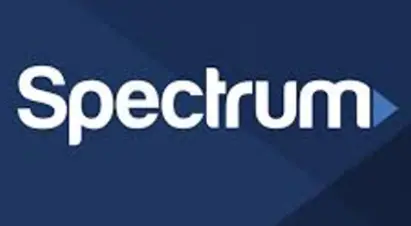
Advertisers above have met our
strict standards for business conduct.

